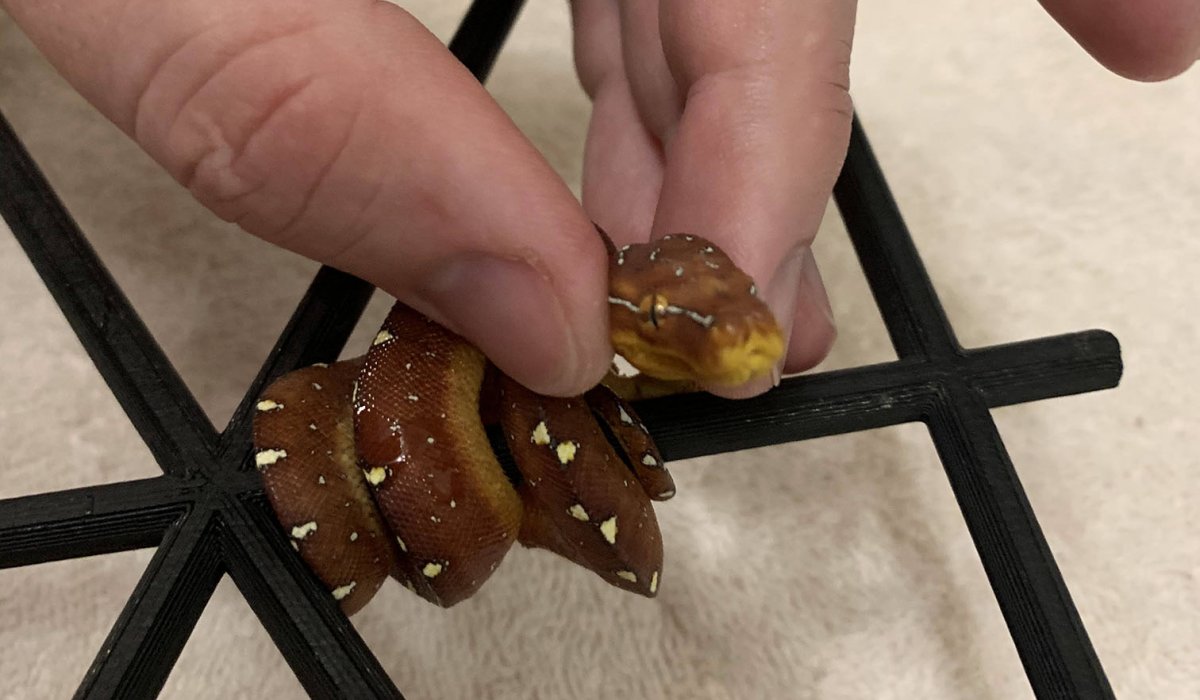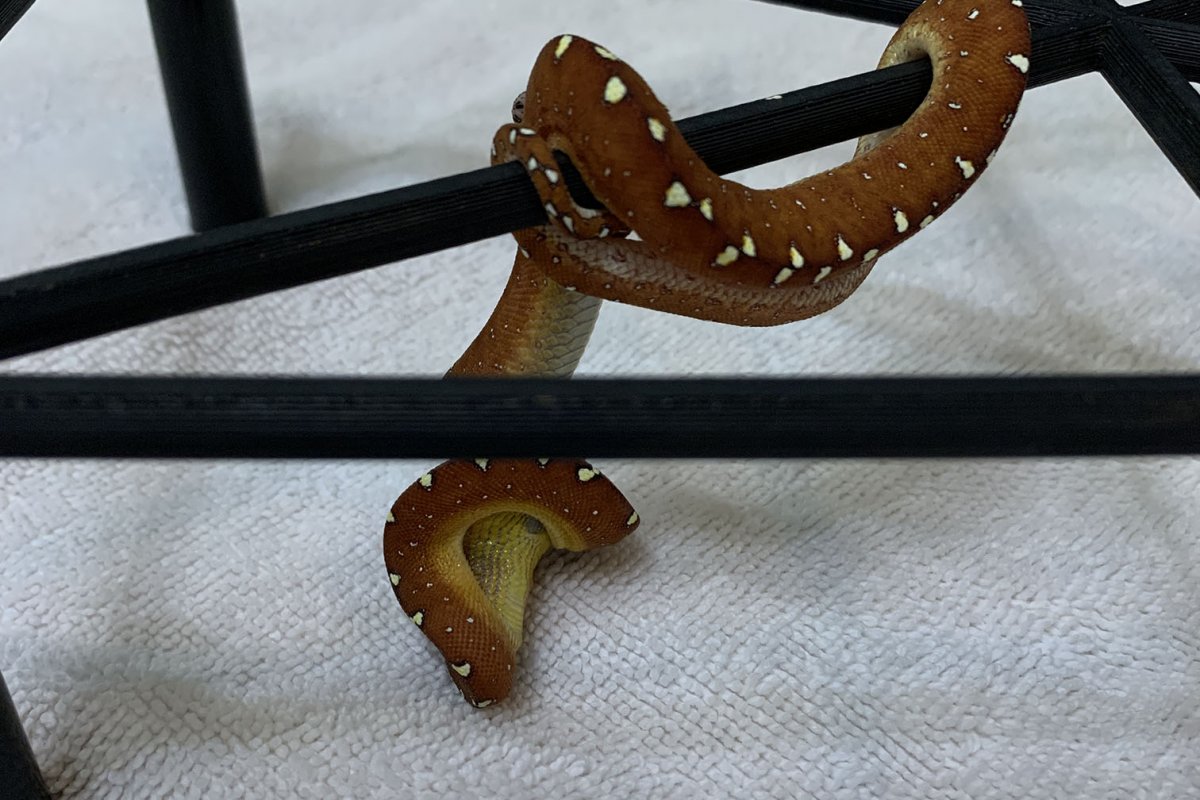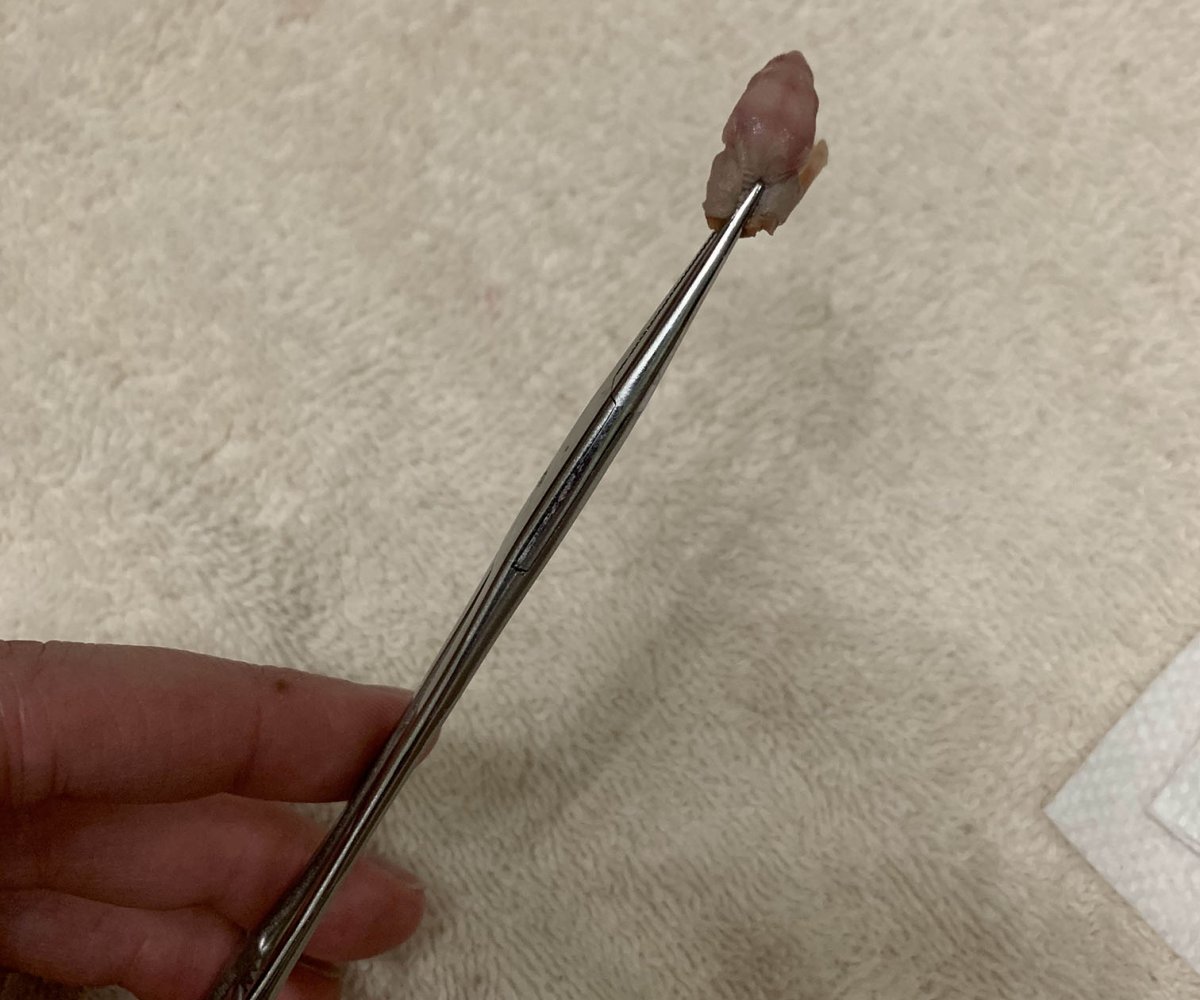DISCLAIMER: We are NOT renowned experts in assist-feeding. We did not have an expert come over and show us how it was done. We spoke with many veterans in assist feeding and watched multiple videos on YouTube for guidance. However, eventually it became necessary to try, and we just had to do the best we could. We certainly learned a lot, and we are much better now. This post is here to try and help others who may find themselves in the same position as us. If you can, please find an experienced person to help you assist feed, especially for fragile hatchlings like green tree pythons.
By far the most frustrating thing I’ve had to do when it comes to reptiles is assist-feeding babies. When babies are born, you feel like an egg timer has just started ticking in your head. How long before their first meal? How long before they accept food? And, if they don’t accept food, how long before you assist feed, before you are at risk of watching them slowly fade away?
Our first clutch of babies was of green tree pythons, and they are mostly what I will discuss here, because my experience with baby ball pythons so far has shown me that they respond very differently when offered food than baby green trees, so the circumstances leading up to the necessity of assisting will be different. Additionally, the fact that green trees are arboreal creates unique challenges in assisting and working with gravity as a factor.
Baby green trees provide a unique challenge because of how very small the babies are, and how fragile their spines are in their first year. Of the ten babies we started with, only one took immediately to food, and the odds didn’t improve very quickly after that, in spite of our scouring the internet and seeking out advice from far more experienced breeders—among the best in the country.
We tried everything, from adjusting temperatures, the length of our tongs, the type of food, how we teased with food, and a myriad of food scenting techniques. Ultimately, we went with the last piece of advice we received: “all my babies eat—whether they want to or not.” And we started assist feeding about a month after hatch day, or about 3-4 weeks after our first attempt to feed. Among the people I spoke with, a month after the first attempted meal seemed pretty standard. There was one who would start assisting almost immediately after refusals, so as not to lose any body weight in the babies. All I would say is you probably don’t want to wait so long that the babies are starting to wear down. Assisting takes a lot out of them. 3 weeks should give a chance to run through the basic food attempts (pink on tongs, pink head, live pink, scented pink, etc).
Assist feeding started out as a nightmare. My husband and I did it as a team. He would carefully and gently restrain the baby, and I would gently and carefully work its mouth open with a pinky head on very small (about 5”) stainless steel hemostats. Anything bigger than a pinky head and the baby would immediately drop it, and gravity would help him do it.
It turns out that babies can be very talented when it comes to getting rid of an unwanted object in their mouths. They can drop it, but they can also throw it across the floor, stretch their mouth open and wipe it on something (like getting gum off your shoe), and wrap their tails around it to pull it out. There’s some technique to inserting the pinky head—you can point the pink nose back towards the throat, and hook the skin on a tooth (usually on the roof of the mouth) and hope it’s just really hard for the baby to get it out. Eventually, maybe he’ll swallow it. But for the babies that are really good at throwing them, sometimes you just have to let them spit it out and put it back in over and over until they get tired of throwing fits and just eat it.
For longer term assist feeders, we’ve tried to increase the amount of mouse given a little bit each time. Half a pinky still won’t readily fall out, and when the baby stops rebelling it gives them more to manipulate, wrap, and practice with. Be ready for them to throw it some more though.
Patience is a big thing here. You have to recognize the limits of the baby snake body. Green tree python babies’ spines are very fragile. So, in assisting, we had to only use as much force as absolutely necessary, not push too hard with the pinkies to force their mouths open, and let go when the babies twisted too much. Then we had to start again. The hardest part about assisting initially was that when the baby was loose, he would run and freak out, and we had to restrain him again. The learning curve stinks; the harder it is for you to get a good grip and place the mouse correctly, the longer the baby is restrained and the more frustrated and unruly he gets. I definitely recommend doing this on the floor with a couple of towels laid down as a padding for baby safety.
We assisted about every three to five days, but tried to stick to three days because of the tiny meal size. The babies have no chance of gaining weight at five days. Our babies at three days struggled to maintain weight on a diet of pinky heads. Three days gives them one day off and one day for cleaning.
Another big thing in patience is that you have to keep trying to get them to take actual meals. We would try the babies on actual meals the night after assisting, or the next night, when babies were more active and more likely to strike. However, with so few striking, it started to feel kind of pointless after a while. In offering food on tongs, I found that gentle teasing on the side of the body works best—there is usually a spot on the body somewhere that will make them pop up and stare around. Even if they wouldn’t strike, I would try to get them to work on something. For some, it was just getting them to come out, because they’d hide as soon as they saw the mouse. For others, I’d try and get them to a point where they’d at least lightly headbutt the mouse.
I’m not really sure what finally gets them eating. For some, I think it is a mental thing. They realize that what they are getting is food, assisting suddenly becomes much easier, and the next time they’re offered a pink on tongs, they take it. This happened with only a couple of our green tree babies. For others, I think the mental thing might be more of a barrier. They don’t want something stuffed in their mouths, and refusing becomes the only way they can exercise their frustration. For this reason I believe that further attempts on actual meals should be gentle and careful not to scare the babies to the point where they shut down. The assist feeding itself is already a scary and unwanted experience.
Three months after the babies hatched, with six out of ten babies still assist-feeding, we retried some of the early techniques that had failed previously…and we had some positive results. Suddenly, two babies were interested in chick-scented food, even though scenting didn’t seem to do anything at all initially. So I would say that revisiting techniques after a while is a good idea.
I don’t think many people talk about these issues with feeding babies. Obviously you hope that they eat right away, or that, in failing at taking frozen-thawed, they will be more interested in live, or that a scent tempts them. But I suspect there are more animals than we know that must be assist fed to start eating. I also suspect, based on what I have observed at shows and heard from other breeders, that this difficulty in getting started is what stops many would-be green tree breeders from being breeders and stops captive bred green tree pythons from being widely available in the market.
Baby snakes are not puppies or kittens, and they are not made to be offered food or have it stuffed in their mouths. They are also unused to weird, hairless meals kicking around in front of them. It’s a huge barrier to overcome. As keepers, we must constantly work to overcome the barriers of being in captivity, and having only certain foods readily available to us. So, I will say the same thing I say to myself. Be patient, and don’t give up.



